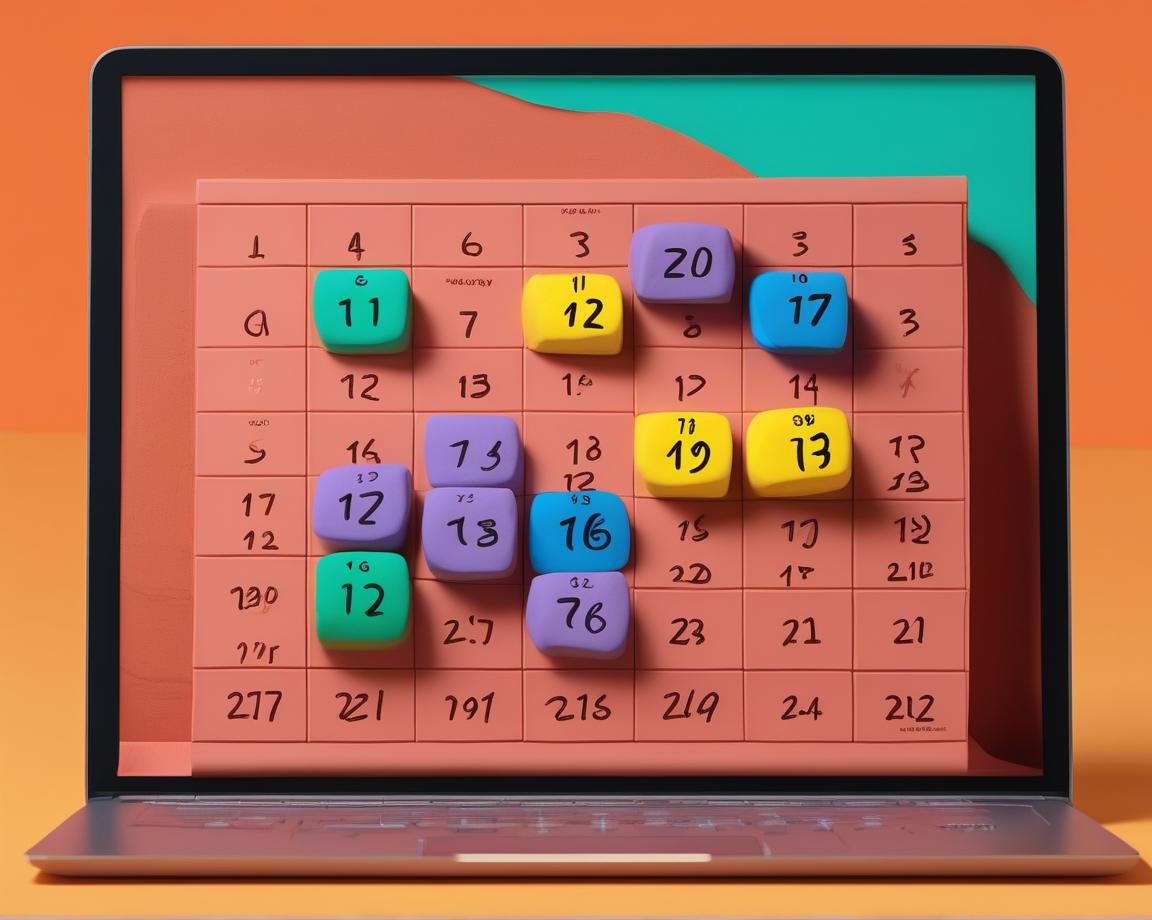What kind of business should do outbound sales?
The type of problem you're solving for businesses & who you're solving it for will influence how much benefit you'll get from outbound sales. Here are a few guiding questions:
- How much education does your customer need before they buy?
- Is this a problem they know they're struggling with?
- Do they actively search for a solution to their problem?
- How new is the category of solution that your offering falls within?
- How many stakeholders in the company would be involved in deciding to purchase this solution?
- Simple Cost of Acquisition math:
- How large are your deals?
- Can you afford to spend $500+ to acquire a customer?
- What is the historical buying behavior of your ideal customer?
It's not a cut & dry answer, but in general, you should lean towards outbound sales if:
- You need to learn more about your market
- You have a high price point
- The purchasing decision is complex for prospects
- Your prospects require a lot of pre-sale education
The key to your outbound sales strategy: deeply understand your ideal customers
Knowing who your ideal customers are will inform the channel you use, the messaging you send, and how you source them... aka everything about your strategy.
Defining your ideal customer's needs & motivations
I use the Jobs To Be Done (JTBD) framework to think through this. It is based on the idea that customers don't buy products or services; they hire them to help them accomplish a specific task or achieve a particular outcome.
Here are the prompting questions I use to reflect on how well we know our customers and identify any assumptions we have that need testing.
Don't worry if you can't answer them all; write down your assumptions and use them to design your outbound sequences.
✍🏻 It’s time to open your Notes app & start reflecting.
Prompting Questions for JTBD Framework
- What task or result is the customer trying to accomplish?
- What changes or improvements is the customer trying to make in their life or work by accomplishing that?
- What challenges or problems does the customer experience while trying to accomplish that?
- What kinds of customers view accomplishing this task or outcome as their top priority?
- What types of customers have the financial means and willingness to pay to accomplish this task or result?
- Who in the company is involved in the purchasing decision?
How To Source Prospects
So. You need to find the people you're selling to online.
Where do you start?
Identifying Buying Signals Online
Think to yourself:
- What problem do we solve for our customers?
- What is happening in the prospect's life, or at their company, that triggers this problem for them?
- What increases the magnitude/impact of this problem?
- How might we uncover if they are experiencing these problems?
- How can we help them visualize the impact of these problems?
- Is there anything on the internet that might indicate this trigger has occurred?
Here are three examples from companies I work with:
1) Job postings: If companies are looking for people with specific skills and experience, you know they are trying to solve a set of problems. If they mention specific technologies, you know they are using them or want to start using them.
2) Social media posts & blogs: Did the company launch a new product recently? Did they expand into a new market? Did they have a significant restructuring or layoff? Did they do a re-brand? Etc... These are all examples of significant change and can be linked to new problems within their business.
3) Company websites: Do they have a free trial? Do you need to book a demo to uncover their pricing? These indicate their growth strategy (sales-led vs. product-led) and the types of customers they likely sell to (enterprise vs. SMB).
Using Company & Prospect Characteristics
These help narrow down the sea of potential customers in lead databases/LinkedIn. It isn't a perfect match to the problems you solve, but you can make assumptions about the types of prospects & companies that experience that problem.
✍🏻 Grab a spreadsheet and start putting down all your assumptions about your ideal customers!
Company:
- Location
- Industry
- Business Model
- Employee Count
- Size of Department
- Technology Used
- Annual Revenue
- Fundraising Details
Prospect:
- Location
- Seniority
- Keywords in Job Title
- Tenure in Role/Company
- Years of Industry Experience
- Psychographics
- Social Media Presence
Now... Where do I source prospects from?
The source of your prospects depends on the characteristics you just outlined and what channel you want to reach them through.
Picking your channel is vital before you start sourcing, as different data sources will have different types of contact information. We'll come back to the data sources in a minute.
Picking a Channel for Outreach
Here are some prompting questions to help you decide on a channel to use:
- Where does your ideal customer spend most of their time online?
- What channel are they accustomed to receiving sales outreach via?
- Often, people don't like receiving sales outreach in their personal space, so be mindful of what types of messages you're sending.
- What method of online communication is used to discuss business in that industry?
- For most cases, email & LinkedIn are the go-tos, but you also have Twitter, Instagram, Facebook, WhatsApp, Telegram, SMS, and Community Chat Groups.
- Lastly, what is scaleable and sustainable for you? A few tools that can help with this:
- Reply.io has excellent multichannel sequencing.
- Instantly.ai is ideal for email-only outreach (bonus: it integrates directly with Clay!)
List of Data Sources
Clay lets you source data from anywhere on the internet!
- 🌈 Input the clay guides on "start from Twitter" "Start from google maps" "start from LinkedIn" "start from web-scrape"
Here are a few more traditional sources of prospect data. When using these, be mindful that they are often outdated, over-used by other salespeople, and might not contain all the criteria you need to qualify prospects:
- LinkedIn SalesNav + Phantom Buster
- Apollo, Seamless, Lusha, etc...
- Industry-specific databases
Once you pull prospects from these, you can use Clay to enrich them with other critical qualifying criteria.
Craft your messaging
Your goal is to get a reply, Not close a deal.
Can your message be relevant enough that your prospect will:
- Read your message
- Reply to your message
- Give you their time to have a conversation
If you still need to understand your customers better, start with discovery-focused messaging. To do this, I recommend you explicitly state that you aren't looking to sell anything; instead, you want to learn about their needs and share what you've learned from others.
How to test assumptions using cold emails
Depending on how far down you got on those JTBD questions earlier, you'll want to test different assumptions in your messaging.
Here are a few different angles you can start from:
- The overall priorities of an organization
- Problems existing within a business unit
- Problems experienced by people in a specific role
- Problems existing within a process or workflow
- Problems that occur when trying to accomplish a specific outcome
As you work through your discovery process, you can keep the same template but adjust two sentences based on what angle you approach it from:
- Problem area I'm exploring
- What I hope to learn from you
This email structure allows you to review the funnel metrics to see what resonates most with your ideal prospects. I also recommend A/B Testing the specific words you use to describe why you're reaching out.
How to position your solution
Once you're confident in the problem you solve & how important it is to your customer, you need to figure out how to communicate this to them, so they see you as the best option to solve their problems.
Here are a few prompting questions to help you with positioning:
- If a customer didn't work with you, what would they do instead?
- What features & capabilities do you have that others don't?
- What value do these features and capabilities create for your customer?
- What kinds of customers care the most about that value?
- Where does your ideal customer sit within the organization's hierarchy?
- Do they care more about strategic priorities or day-to-day operations?
- Of all these solutions, how are they categorized?
- Of those categories, where do your unique features & capabilities show that you are the best option?
- What is going on in the world that impacts these categories?
If you want to go into a deep positioning exercise, (I recommend April Dunford's positioning content. That's where I learned positioning strategy!
A view into the mindset of your prospects
Executives are exhausted by receiving, on average, 20+ cold emails daily.
When doing cold outbound, you have 10 seconds of the prospect's attention to make a first impression, and often as low as 3 seconds.
Their inbox is a to-do list, and they will ruthlessly prioritize what they read and reply to.
80% of emails are viewed and responded to on a mobile phone
- insert source from Lavender
Writing your emails
✍🏻 Now it’s time to put fingers to the keyboard and write some emails!
Email Structure & Length Guidelines:
There are a lot of recommendations on word count and formatting out there - my approach to this is to develop empathy for the email reading experience of your prospects.
Subject line + first sentence:
They’ll take <3 seconds to decide on either archiving or opening your email. This normally is done from their phone’s email app.
Structure, length & call to action of email:
They will take 3-5 seconds to skim the email and decide if it is worth fully reading.
Then, they’ll likely take 10 seconds to fully read it, and decide if it is interesting enough for a conversation. Depending on the person and their preferences, this will likely be a few quick follow up questions, and then a phone call if they deem it relevant & valuable enough.
Email signature:
This should very quickly answers the following questions going through your prospect’s head:
- Who is this person?
- What do they want from me?
- What does their company offer?
- Is that relevant to me?
Sales writing best practices:
- Reduce I & we language, focus on the prospect
- Straightforward, compelling, and easy for the target customer to understand and relate to.
- Personalized & relevant, stand out from the crowd of spam in their inbox
- Ask questions throughout your sequence, but not more than one per email
- Use your customer's language (extract this from discovery calls you have with them)
- Avoid spam trigger words
- Short, with easy-to-read formatting & spacing
- Have a CTA that is clear & easy to action for the prospect
- 💡 Pro tip: To scale relevant outreach, use the buying signals you discovered as part of your messaging. (embed clay table)
Launching your campaigns
Once you've determined who you're reaching out to and what to say to them, next you need to launch your campaigns!
The most important takeaway is picking the right sequencing tool for your needs and following the correct technical setup steps.
Email Warming & Domain Setup
- Setting up your domain: check out Instantly's guide to setting up MX, SPF, DKIM & DMARC.
- Warming up your email: check out Instantly's overview here.
Sequencing tools
There are lots on the market. Here are a few I've personally used & my two cents on them:
- Reply.io: their entire product's purpose is to do the best multichannel sequencing possible. Excellent for hypothesis-based outreach. Built for SMBs & entrepreneurs.
- Outreach.io: sequencing is one portion of their product, and they're very focused on large enterprises that use Salesforce.
- Instantly.ai: they only do email sequencing but will get you the best delivery rate on the market. Also, their email warmup tool is the best I've seen.
- HubSpot Sequencing: very basic. They need to invest more resources into improving this feature, and the reporting for it could be better. I love the HubSpot CRM & automation, though - I recommend pairing another Sequencing tool with HubSpot.
- Streak for Gmail: free, but it could be more user-friendly and has a limited feature set.
- A few others you can explore are Smartlead, Applemarket and Salesloft - although I can’t personally speak to the experience of using them.
Measuring the success of your campaigns
Many founders start doing cold outbound to close deals and scale their revenue immediately. The harsh reality is that this rarely works. You're likely to:
- Reach out to the wrong people
- Burn a bunch of leads using the wrong messaging
- Tarnish your domain health
My philosophy on successful outbound campaigns
When starting out with cold outbound, my philosophy of success is:
- Am I getting a clearer picture of who must have my product?
- Am I getting better at explaining the problem we solve & how we solve it?
- Am I building solid relationships with my ideal customers?
If you start with this mindset, you'll drastically speed up your search for product market fit while also building the early community of customer champions you need to succeed in the long run.
Once you've nailed your targeting, positioning & messaging, you can shift your outbound cadences to be focused on sales, not learning.
Key metrics to track
- Bounce Rate
- Open rate
- Note: Start with this at the beginning to see what subject lines resonate the most. Once you find a good formula, turn off the open tracking cookie to improve the delivery rate of your emails.
- Reply Rate
- Reply Tags:
- Expressed interest
- Using internal solution
- Using a competitor
- Not experiencing the pain
- Wrong type of prospect
- Wrong type of company
- Not interested
- Unsubscribe
- Discover Call Booked Rate
- The conversion rates between each stage of your sales process (typically: Discovery, Demo, Proposal, Legal & Security, Closed - Won, Closed - Lost)
Benchmarks for these metrics

Note: ***The industry average for Meetings Booked Rate using scaled cold outbound is below 1%.
✍🏻About the author: Stefan Kollenberg runs go-to-market strategy for B2B startups, leading client delivery for volley.com
What kind of business should do outbound sales?
The type of problem you're solving for businesses & who you're solving it for will influence how much benefit you'll get from outbound sales. Here are a few guiding questions:
- How much education does your customer need before they buy?
- Is this a problem they know they're struggling with?
- Do they actively search for a solution to their problem?
- How new is the category of solution that your offering falls within?
- How many stakeholders in the company would be involved in deciding to purchase this solution?
- Simple Cost of Acquisition math:
- How large are your deals?
- Can you afford to spend $500+ to acquire a customer?
- What is the historical buying behavior of your ideal customer?
It's not a cut & dry answer, but in general, you should lean towards outbound sales if:
- You need to learn more about your market
- You have a high price point
- The purchasing decision is complex for prospects
- Your prospects require a lot of pre-sale education
The key to your outbound sales strategy: deeply understand your ideal customers
Knowing who your ideal customers are will inform the channel you use, the messaging you send, and how you source them... aka everything about your strategy.
Defining your ideal customer's needs & motivations
I use the Jobs To Be Done (JTBD) framework to think through this. It is based on the idea that customers don't buy products or services; they hire them to help them accomplish a specific task or achieve a particular outcome.
Here are the prompting questions I use to reflect on how well we know our customers and identify any assumptions we have that need testing.
Don't worry if you can't answer them all; write down your assumptions and use them to design your outbound sequences.
✍🏻 It’s time to open your Notes app & start reflecting.
Prompting Questions for JTBD Framework
- What task or result is the customer trying to accomplish?
- What changes or improvements is the customer trying to make in their life or work by accomplishing that?
- What challenges or problems does the customer experience while trying to accomplish that?
- What kinds of customers view accomplishing this task or outcome as their top priority?
- What types of customers have the financial means and willingness to pay to accomplish this task or result?
- Who in the company is involved in the purchasing decision?
How To Source Prospects
So. You need to find the people you're selling to online.
Where do you start?
Identifying Buying Signals Online
Think to yourself:
- What problem do we solve for our customers?
- What is happening in the prospect's life, or at their company, that triggers this problem for them?
- What increases the magnitude/impact of this problem?
- How might we uncover if they are experiencing these problems?
- How can we help them visualize the impact of these problems?
- Is there anything on the internet that might indicate this trigger has occurred?
Here are three examples from companies I work with:
1) Job postings: If companies are looking for people with specific skills and experience, you know they are trying to solve a set of problems. If they mention specific technologies, you know they are using them or want to start using them.
2) Social media posts & blogs: Did the company launch a new product recently? Did they expand into a new market? Did they have a significant restructuring or layoff? Did they do a re-brand? Etc... These are all examples of significant change and can be linked to new problems within their business.
3) Company websites: Do they have a free trial? Do you need to book a demo to uncover their pricing? These indicate their growth strategy (sales-led vs. product-led) and the types of customers they likely sell to (enterprise vs. SMB).
Using Company & Prospect Characteristics
These help narrow down the sea of potential customers in lead databases/LinkedIn. It isn't a perfect match to the problems you solve, but you can make assumptions about the types of prospects & companies that experience that problem.
✍🏻 Grab a spreadsheet and start putting down all your assumptions about your ideal customers!
Company:
- Location
- Industry
- Business Model
- Employee Count
- Size of Department
- Technology Used
- Annual Revenue
- Fundraising Details
Prospect:
- Location
- Seniority
- Keywords in Job Title
- Tenure in Role/Company
- Years of Industry Experience
- Psychographics
- Social Media Presence
Now... Where do I source prospects from?
The source of your prospects depends on the characteristics you just outlined and what channel you want to reach them through.
Picking your channel is vital before you start sourcing, as different data sources will have different types of contact information. We'll come back to the data sources in a minute.
Picking a Channel for Outreach
Here are some prompting questions to help you decide on a channel to use:
- Where does your ideal customer spend most of their time online?
- What channel are they accustomed to receiving sales outreach via?
- Often, people don't like receiving sales outreach in their personal space, so be mindful of what types of messages you're sending.
- What method of online communication is used to discuss business in that industry?
- For most cases, email & LinkedIn are the go-tos, but you also have Twitter, Instagram, Facebook, WhatsApp, Telegram, SMS, and Community Chat Groups.
- Lastly, what is scaleable and sustainable for you? A few tools that can help with this:
- Reply.io has excellent multichannel sequencing.
- Instantly.ai is ideal for email-only outreach (bonus: it integrates directly with Clay!)
List of Data Sources
Clay lets you source data from anywhere on the internet!
- 🌈 Input the clay guides on "start from Twitter" "Start from google maps" "start from LinkedIn" "start from web-scrape"
Here are a few more traditional sources of prospect data. When using these, be mindful that they are often outdated, over-used by other salespeople, and might not contain all the criteria you need to qualify prospects:
- LinkedIn SalesNav + Phantom Buster
- Apollo, Seamless, Lusha, etc...
- Industry-specific databases
Once you pull prospects from these, you can use Clay to enrich them with other critical qualifying criteria.
Craft your messaging
Your goal is to get a reply, Not close a deal.
Can your message be relevant enough that your prospect will:
- Read your message
- Reply to your message
- Give you their time to have a conversation
If you still need to understand your customers better, start with discovery-focused messaging. To do this, I recommend you explicitly state that you aren't looking to sell anything; instead, you want to learn about their needs and share what you've learned from others.
How to test assumptions using cold emails
Depending on how far down you got on those JTBD questions earlier, you'll want to test different assumptions in your messaging.
Here are a few different angles you can start from:
- The overall priorities of an organization
- Problems existing within a business unit
- Problems experienced by people in a specific role
- Problems existing within a process or workflow
- Problems that occur when trying to accomplish a specific outcome
As you work through your discovery process, you can keep the same template but adjust two sentences based on what angle you approach it from:
- Problem area I'm exploring
- What I hope to learn from you
This email structure allows you to review the funnel metrics to see what resonates most with your ideal prospects. I also recommend A/B Testing the specific words you use to describe why you're reaching out.
How to position your solution
Once you're confident in the problem you solve & how important it is to your customer, you need to figure out how to communicate this to them, so they see you as the best option to solve their problems.
Here are a few prompting questions to help you with positioning:
- If a customer didn't work with you, what would they do instead?
- What features & capabilities do you have that others don't?
- What value do these features and capabilities create for your customer?
- What kinds of customers care the most about that value?
- Where does your ideal customer sit within the organization's hierarchy?
- Do they care more about strategic priorities or day-to-day operations?
- Of all these solutions, how are they categorized?
- Of those categories, where do your unique features & capabilities show that you are the best option?
- What is going on in the world that impacts these categories?
If you want to go into a deep positioning exercise, (I recommend April Dunford's positioning content. That's where I learned positioning strategy!
A view into the mindset of your prospects
Executives are exhausted by receiving, on average, 20+ cold emails daily.
When doing cold outbound, you have 10 seconds of the prospect's attention to make a first impression, and often as low as 3 seconds.
Their inbox is a to-do list, and they will ruthlessly prioritize what they read and reply to.
80% of emails are viewed and responded to on a mobile phone
- insert source from Lavender
Writing your emails
✍🏻 Now it’s time to put fingers to the keyboard and write some emails!
Email Structure & Length Guidelines:
There are a lot of recommendations on word count and formatting out there - my approach to this is to develop empathy for the email reading experience of your prospects.
Subject line + first sentence:
They’ll take <3 seconds to decide on either archiving or opening your email. This normally is done from their phone’s email app.
Structure, length & call to action of email:
They will take 3-5 seconds to skim the email and decide if it is worth fully reading.
Then, they’ll likely take 10 seconds to fully read it, and decide if it is interesting enough for a conversation. Depending on the person and their preferences, this will likely be a few quick follow up questions, and then a phone call if they deem it relevant & valuable enough.
Email signature:
This should very quickly answers the following questions going through your prospect’s head:
- Who is this person?
- What do they want from me?
- What does their company offer?
- Is that relevant to me?
Sales writing best practices:
- Reduce I & we language, focus on the prospect
- Straightforward, compelling, and easy for the target customer to understand and relate to.
- Personalized & relevant, stand out from the crowd of spam in their inbox
- Ask questions throughout your sequence, but not more than one per email
- Use your customer's language (extract this from discovery calls you have with them)
- Avoid spam trigger words
- Short, with easy-to-read formatting & spacing
- Have a CTA that is clear & easy to action for the prospect
- 💡 Pro tip: To scale relevant outreach, use the buying signals you discovered as part of your messaging. (embed clay table)
Launching your campaigns
Once you've determined who you're reaching out to and what to say to them, next you need to launch your campaigns!
The most important takeaway is picking the right sequencing tool for your needs and following the correct technical setup steps.
Email Warming & Domain Setup
- Setting up your domain: check out Instantly's guide to setting up MX, SPF, DKIM & DMARC.
- Warming up your email: check out Instantly's overview here.
Sequencing tools
There are lots on the market. Here are a few I've personally used & my two cents on them:
- Reply.io: their entire product's purpose is to do the best multichannel sequencing possible. Excellent for hypothesis-based outreach. Built for SMBs & entrepreneurs.
- Outreach.io: sequencing is one portion of their product, and they're very focused on large enterprises that use Salesforce.
- Instantly.ai: they only do email sequencing but will get you the best delivery rate on the market. Also, their email warmup tool is the best I've seen.
- HubSpot Sequencing: very basic. They need to invest more resources into improving this feature, and the reporting for it could be better. I love the HubSpot CRM & automation, though - I recommend pairing another Sequencing tool with HubSpot.
- Streak for Gmail: free, but it could be more user-friendly and has a limited feature set.
- A few others you can explore are Smartlead, Applemarket and Salesloft - although I can’t personally speak to the experience of using them.
Measuring the success of your campaigns
Many founders start doing cold outbound to close deals and scale their revenue immediately. The harsh reality is that this rarely works. You're likely to:
- Reach out to the wrong people
- Burn a bunch of leads using the wrong messaging
- Tarnish your domain health
My philosophy on successful outbound campaigns
When starting out with cold outbound, my philosophy of success is:
- Am I getting a clearer picture of who must have my product?
- Am I getting better at explaining the problem we solve & how we solve it?
- Am I building solid relationships with my ideal customers?
If you start with this mindset, you'll drastically speed up your search for product market fit while also building the early community of customer champions you need to succeed in the long run.
Once you've nailed your targeting, positioning & messaging, you can shift your outbound cadences to be focused on sales, not learning.
Key metrics to track
- Bounce Rate
- Open rate
- Note: Start with this at the beginning to see what subject lines resonate the most. Once you find a good formula, turn off the open tracking cookie to improve the delivery rate of your emails.
- Reply Rate
- Reply Tags:
- Expressed interest
- Using internal solution
- Using a competitor
- Not experiencing the pain
- Wrong type of prospect
- Wrong type of company
- Not interested
- Unsubscribe
- Discover Call Booked Rate
- The conversion rates between each stage of your sales process (typically: Discovery, Demo, Proposal, Legal & Security, Closed - Won, Closed - Lost)
Benchmarks for these metrics

Note: ***The industry average for Meetings Booked Rate using scaled cold outbound is below 1%.
✍🏻About the author: Stefan Kollenberg runs go-to-market strategy for B2B startups, leading client delivery for volley.com



























































